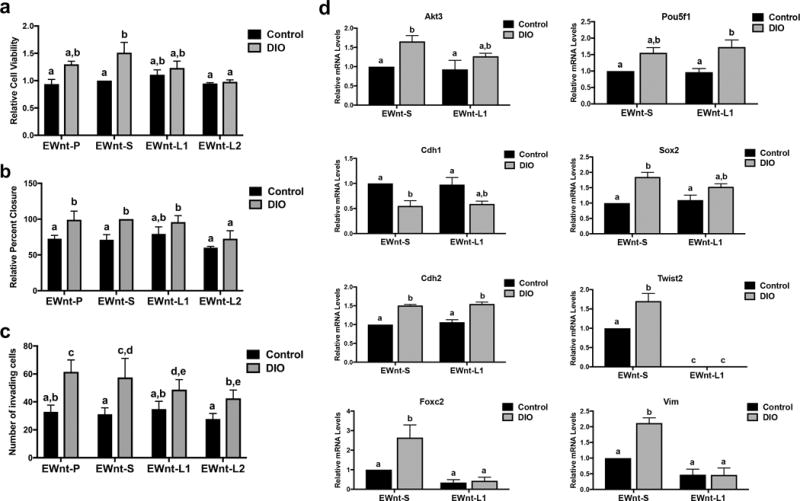Figure 5.

Leptin contributes to an obesity-associated metastatic phenotype and CSC/EMT genotype. (a) Cell viability in parental E-Wnt cells (EWnt-P) as well as E-Wnt cells stably transfected with a scrambled shRNA plasmid (EWnt-S) or shRNA to Lepr (EWnt-L1 and EWnt-L2) was measured by MTT assay following a 48-hour exposure to media containing 2% DIO or control mouse serum. (b) Migration of EWnt-P, EWnt-S, EWnt-L1, and EWnt-L2 cells during a 6-hour exposure to media containing 2% DIO or control mouse serum was measured by wound healing assay. (c) The invasive capacity of EWnt-P, EWnt-S, EWnt-L1, and EWnt-L2 cells in response to chemoattraction with media containing 2% DIO or control mouse serum over 24 hours was measured using Matrigel invasion chambers. (d) Expression of CSC/EMT-related genes in EWnt-S and EWnt-L2 cells following a 24-hour exposure to media containing 2% DIO or control mouse serum was measured by quantitative RT-PCR. Different letters indicate significant differences, P<0.05.
